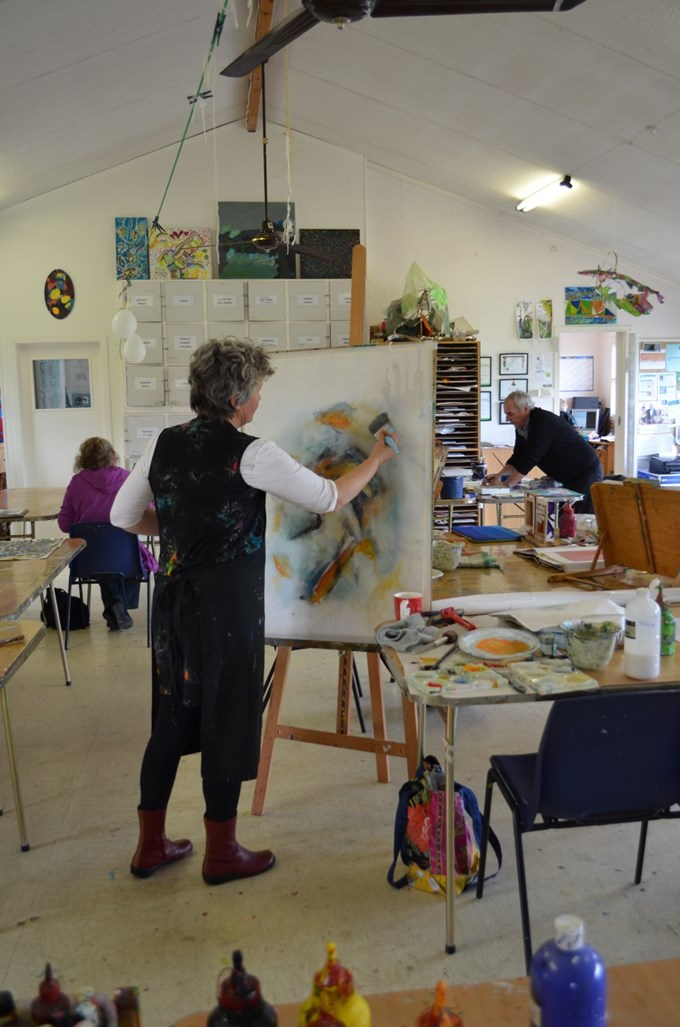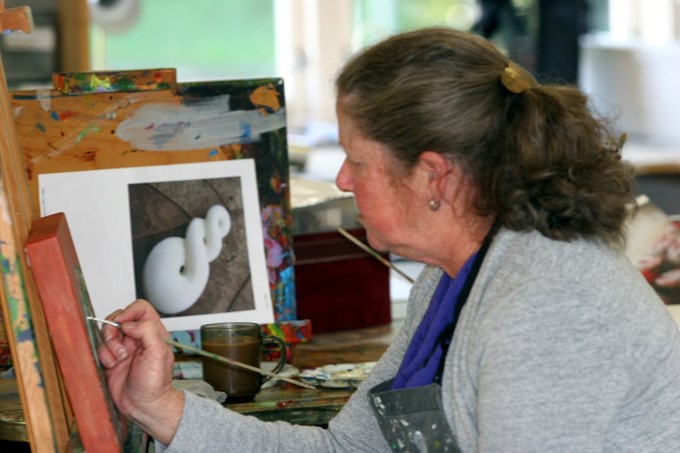Māpura’s mission statement says that they “provide for people of diverse life experience to learn, grow and enhance their lives through creativity”. One of Māpura’s most significant art therapy programmes is their ‘Art Therapy After Stroke’ Programme. Running since 2010, this programme was commissioned by the Stroke Foundation Northern Region with Foundation funding from a fundraising concert after New Zealand musician Chris Knox suffered a stroke.
The team delivering this 10-12 week programme includes registered art therapists and art tutors and follows a ‘group-inquiry’ process, initiating a journey of self-reflection and examination of participants’ experience of having a stroke. Participants talk of how, after a stroke, you are often left with a profound sense of change in your life and often the realisation that you can no longer do what you used to. Prevalent issues such as grief, loss of identity, loss of confidence and self-autonomy for example are a focus.
Art provides a 'language' and the medium by which participants in the programme can, with skilled guidance and encouragement, firstly explore the extremely raw emotions of being debilitated by a stroke. The programme then assists participants to look into the future, and through art encourages and stimulates the rebuilding of their physical and psychological capabilities.
The participants in Māpura’s programme are testament to its value. They are happy to stop work and discuss their creation, and tell you just how creative practice has changed their life. A participant commented:
…(since my stroke) I have been analysing, thinking about who I was before my stroke, But so much has changed, not just physically but mentally, that I am not entirely sure who I was before my stroke. I found that working with the different mediums in the art class helped me to explore these things instead of doing it internally, I was able to put it on paper. It was huge, it was cathartic, it felt brilliant, I wouldn’t have missed art class for anything. I would have had to have been near death to miss it…”
The positive feedback from participants is reinforced by analytical research that is being undertaken by University of Auckland Centre for Brain Research. The findings to date are very positive with participants showing significant improvement in mood, memory and participation in life, as well as other beneficial physical and psychological outcomes.
Having completed the intensive Art Therapy After Stroke Programme participants have the opportunity to develop their art skills by moving into Mapura’s Arts Transition Programme, which blends fine arts tuition and art therapy. Those who wish to continue with creative practice, and have identified that they want to move more toward developing their identity as an artist, can enrol in the 'Leading a Creative Life' programme.
Demand for Māpura’s stroke programme and art therapy skills is high and Māpura would love to provide more than one stroke programme a year, however the programme is delivered free to participants as most find themselves in constrained financial situations post-stroke. Consequently Māpura are reliant on the generosity of a variety of funding channels and donations to run the programmes.
With a community focus that goes well beyond Art Therapy After Stroke, Māpura also provides 16 innovative art programmes aimed at adults, teens and children of all abilities. Programmes run six days a week, and these are inclusive of diversity – 'arts for everyone'.
For more information go to www.mapurastudios.org.nz
(Māpura website - http://www.mapurastudios.org.nz/art-therapy-after-stroke/).
Or if you would like to donate : http://www.mapurastudios.org.nz/supportmapura



